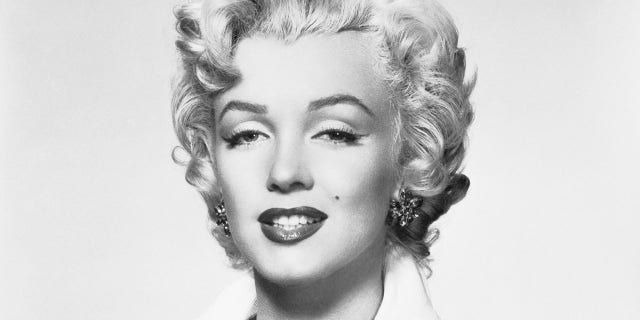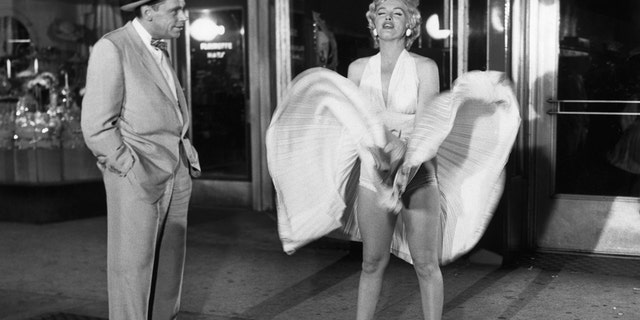Iconic Hollywood movie star Marilyn Monroe was found dead in her Los Angeles home at age 36 on this day in history, August 5, 1962.
The actress was discovered face down and lying nude on her bed holding a telephone in one hand, according to History.com.
Scattered throughout her room were empty pill bottles; the medication reportedly was prescribed to treat her depression, the same source recounted.
A brief investigation after her death resulted in conclusions by the Los Angeles police that Monroe’s cause of death was suicide.
The report said Monroe’s death was “caused by a self-administered overdose of sedative drugs and that the mode of death is probable suicide,” according to multiple sources.
The coroner’s report also provided more insight into Monroe’s mental state at the time.
“Miss Monroe had suffered from psychiatric disturbance for a long time … Mood changes were abrupt and unpredictable,” Newsweek reported.
“Among symptoms of disorganization, sleep disturbance was prominent, for which she had been taking sedative drugs for many years.”
“She had called for help and had been rescued” on previous occasions.
The same report continued: “Miss Monroe had often expressed wishes to give up, to withdraw, and even to die. On more than one occasion in the past, she had made a suicide attempt, using sedative drugs,” Newsweek also recounted.
“On these occasions, she had called for help and had been rescued. It is our opinion that the same pattern was repeated on the evening of Aug. 4 except for the rescue.”
Born Norma Jeane Mortenson in Los Angeles on June 1, 1926, Monroe spent much of her early years in foster care and in an orphanage, according to Biography.com.

At age 16, she married a fellow worker in an aircraft factory.
They divorced only a few years later.
She took up modeling in 1944 — and in 1946 she signed a brief contract with 20th Century Fox.
She took the screen name Marilyn Monroe and famously posed nude for a calendar in 1949, the source also said.
Her role in “The Seven Year Itch” (1955) highlighted Monroe’s comedic ability.
Monroe’s career starting gaining momentum in the early 1950s, with performances in the films “Love Nest” (1951), “Monkey Business” (1952) and “Niagara” (1953), according to Biography.com.
Her next ensemble of films — “Gentlemen Prefer Blondes” (1953), “How to Marry a Millionaire” (1953) and “There’s No Business Like Show Business” (1954) — showcased Monroe’s sex-symbol image and voluptuous likeness.
Alternatively, her role in “The Seven Year Itch” (1955) highlighted Monroe’s comedic ability.
The film featured the pop-culture classic scene in which she stands over a subway grating and has her white skirt billowing up by the wind created from a passing train, according to multiple sources.
While she was enjoying success on the big screen, Monroe married baseball legend Joe DiMaggio in 1954.
Their love story was short-lived, though.
In 1956, Monroe tried her luck at marriage a third time and wed playwright Arthur Miller.
They divorced nine months later, according to MLB.com.
In 1956, Monroe tried her luck at marriage a third time and wed playwright Arthur Miller.
A few years later, in 1959, Monroe appeared in the hit comedy “Some Like in Hot.”
Its plot involved Chicago musicians Joe and Jerry (Tony Curtis and Jack Lemmon), who witness a mob hit and flee town in drag to join an all-female band headed to Miami.

The group’s singer, Sugar Kane, played by Monroe, leads them through escapades in the film.
“‘Some Like It Hot’ is as deliriously funny and fresh today as it was when it first knocked audiences out decades ago,” said the Criterion Collection.
In 1961, Monroe ended her marriage to Miller.
“The union would come to be plagued by an assortment of strains, which perhaps began when Monroe discovered a notebook in which Miller had scribbled his misgivings about having married her,” noted Life.com.

Tormented by repeated miscarriages and other issues, Monroe turned to barbiturates, the same source said.
Monroe’s final film was “The Misfits” (1961), written by Miller and co-starring Montgomery Clift and Clark Gable (it would also be Gable’s final appearance on screen), noted History.com.
Then, in June 1962, 20th Century Fox dismissed Monroe because of extended absences from the set of “Something’s Got to Give,” the same source also indicated.
Just weeks later, on Aug. 5, 1962, Monroe was found dead from an overdose of barbiturates in her home in Brentwood, California, multiple sources noted.
Although her death was ruled a suicide, conspiracy theories still circulate regarding the circumstances of her passing.
“Monroe is presumed to have passed away on August 4, 1962, in the late hours of the evening; however, Monroe’s official time of death was 3:50 a.m. on August 5, 1962,” according to People.com.
Although her death was ruled a suicide, conspiracy theories still circulate regarding the circumstances of her passing.

The most notable among those rumors is that the cause of her death were somehow covered up by the Kennedy brothers (then-U.S. president John F. Kennedy, and his brother, U.S. Attorney General Robert F. Kennedy) with whom she was allegedly having affairs, according to Harper’s Bazaar.
“So prevalent were these theories that the investigation into her death was reopened in 1982, though no fresh conclusion was reached,” the same source said.
Monroe’s short and tragic life has been referenced repeatedly in American pop culture, as she was the inspiration for Elton John’s song “Candle in the Wind,” which first appeared on his 1973 album “Goodbye Yellow Brick Road,” according to the Los Angeles Times.
In the decades since her death, Monroe has been the subject of documentaries, films, books and TV miniseries, all chronicling the short life of the actress, said Variety.
Source: Fox News









